Paper Solvy Image Transfer
This blog post was originally published in 2011, but in the ensuing years and web/blog redesigns, it accidentally went missing. Our most recent enewsletter discussed stabilizers, and so we wanted to offer this to readers again. This many years later, still a great transfer technique! Watch Liz Kettle demonstrate her technique on YouTube: Image Transfers with Water Soluble Paper »
Image Transfer with Water Soluble Paper

by Liz Kettle, Textile Evolution
One of the frustrations of image transfer techniques is the propensity of manufacturers to ‘improve’ their products to retain the ink, making it difficult for those of us who want to transfer the ink to another surface. If you share this frustration, you can imagine my excitement when Laura Cater-Woods and I were discussing some of her innovative surface techniques using water soluble paper stabilizer meant for foundation piecing and embroidery.
Laura wasn’t using the paper with imagery, but the gears in my brain started turning... and in a true light bulb moment I found a new way to transfer inkjet printed images to fabric or paper. Best of all, this product probably won’t be ‘improved.’

Supplies:
- Desired image(s) and an Inkjet Printer
- Water Soluble Stabilizer, such as Paper Solvy™ or Wash Away Foundation Paper.
- Fabric to transfer onto
- GOLDEN Matte Medium
- Foam brush
- Brayer
Steps:
Before you begin, print your image onto a sheet of the Paper Solvy or other water soluble stabilizer. This process works with both pigment and dye inkjet printers. Ed. note: one of the uses of Paper Solvy is to reproduce multiple foundation and paper piecing designs; it is manufactured to go though a printer or copy machine without jamming or sticking. Remember that if necessary, reverse your image so that your final transfer will be oriented as you wish (necessary if your image contains text.>
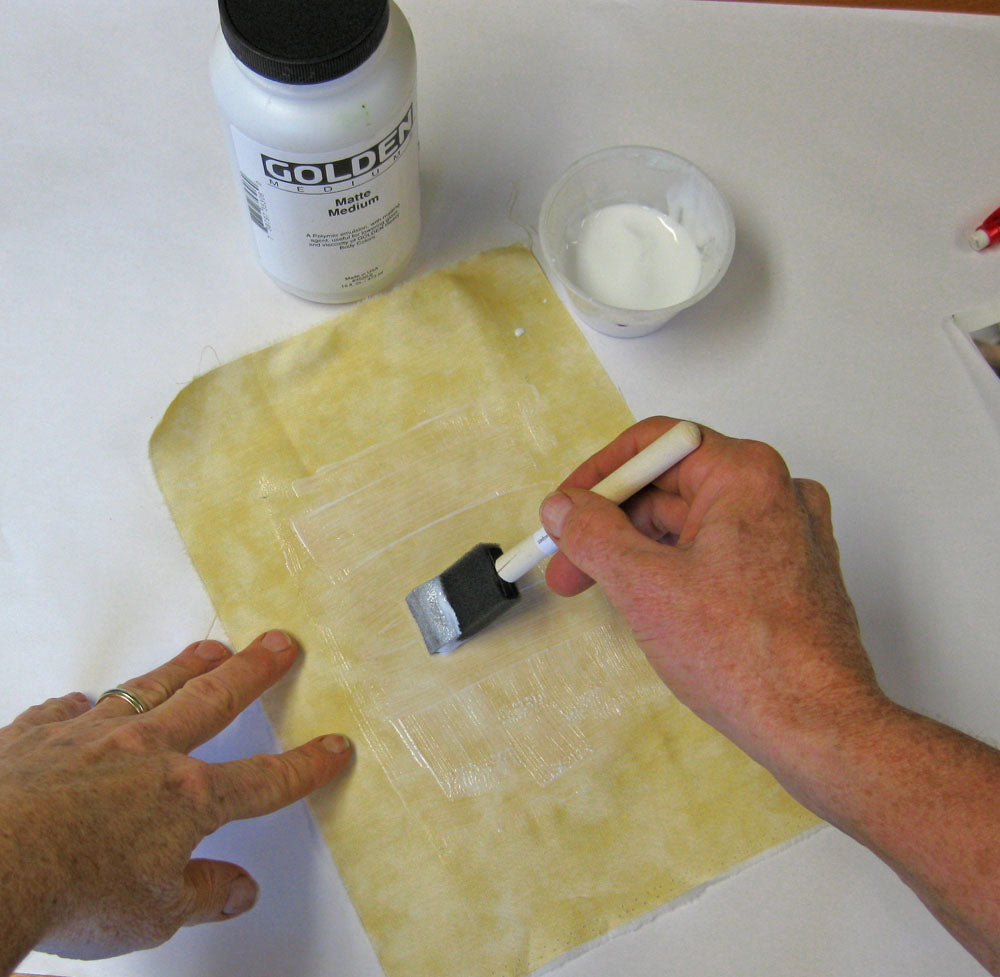
1.) Use a foam brush to apply a layer of matte medium to the fabric. You need enough medium to cover the fabric evenly without excess.
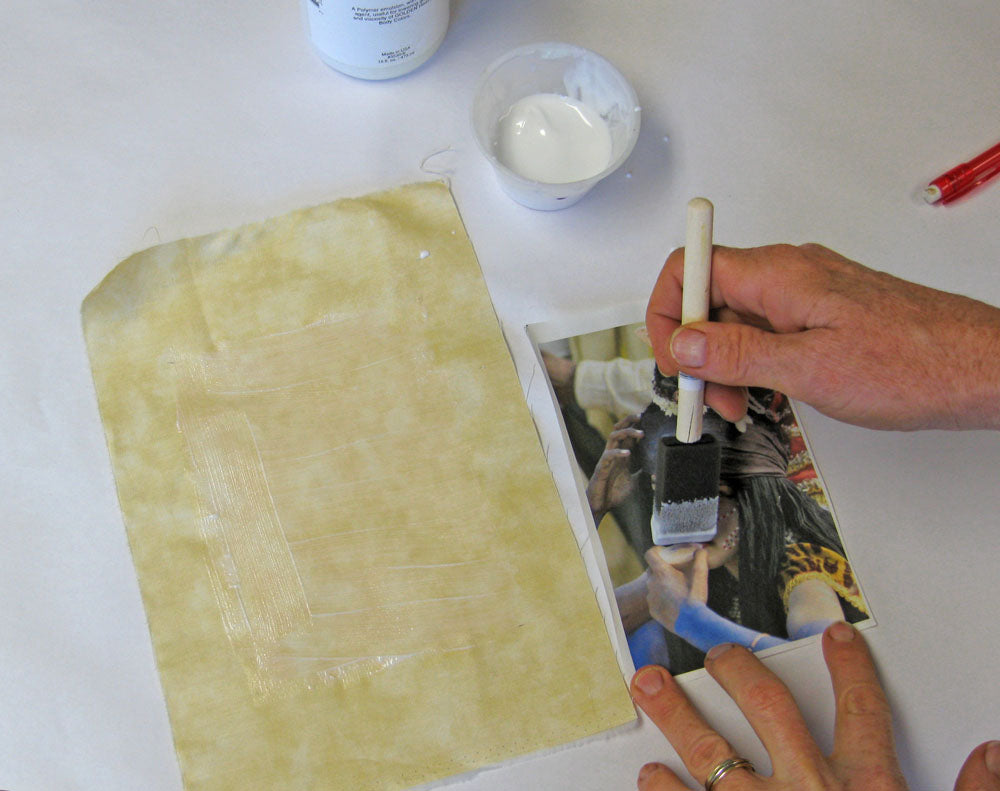
2.) Apply a thin coat of matte medium to the Paper Solvy printed image.
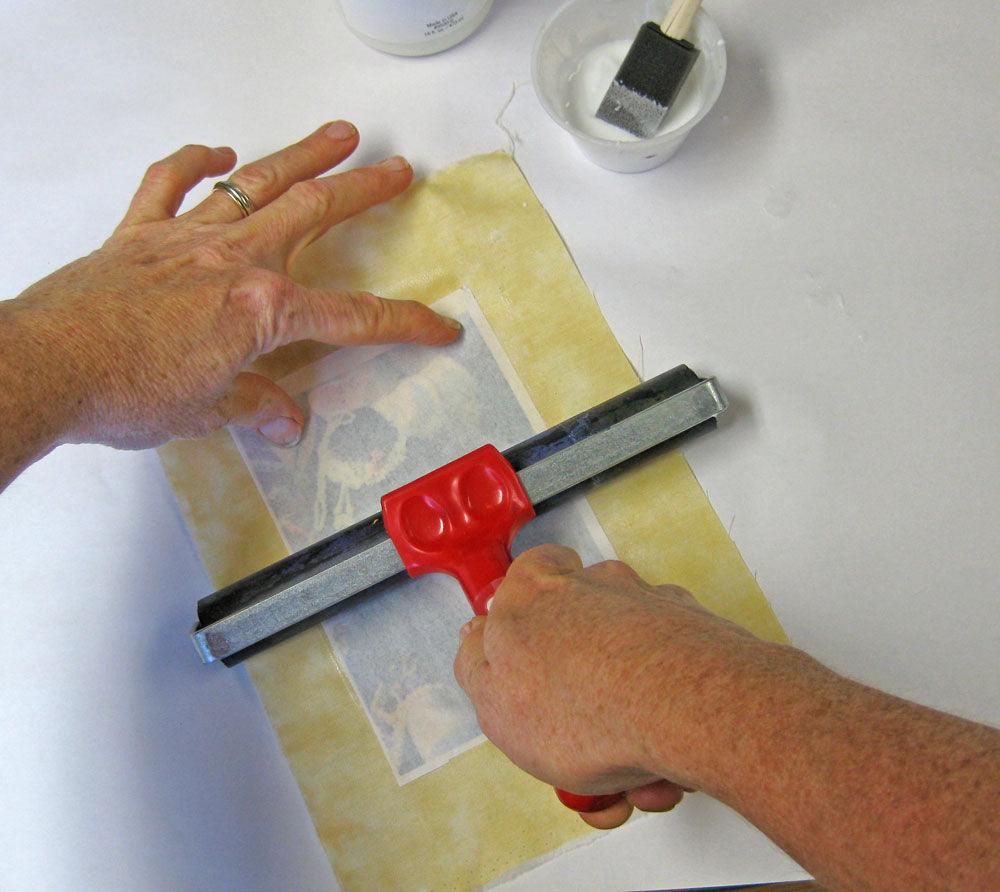
3.) Lay the printed image down on the fabric and brayer firmly. Hold the paper firmly to keep it from wrapping up on the brayer or shifting as you roll the brayer over the Paper Solvy.
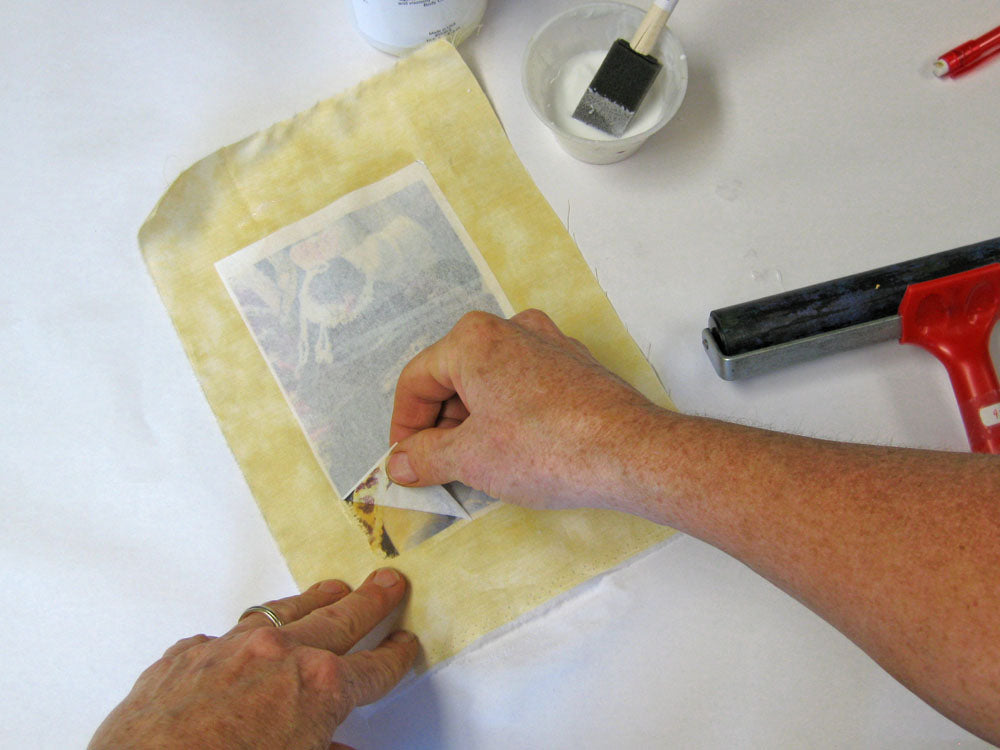
4.) Wait for a count of 5-7 seconds, and check to see if the image is transferring by pulling up one corner of the paper. If you don’t see the transfer happening, lay the paper back down, brayer again or wait a few moments longer.

5.) Peel up the paper to reveal your image. Some times the paper will come up in one piece. The longer you wait, the more the paper will begin to break down and come off in multiple pieces. In this example, the paper came off in three strips.
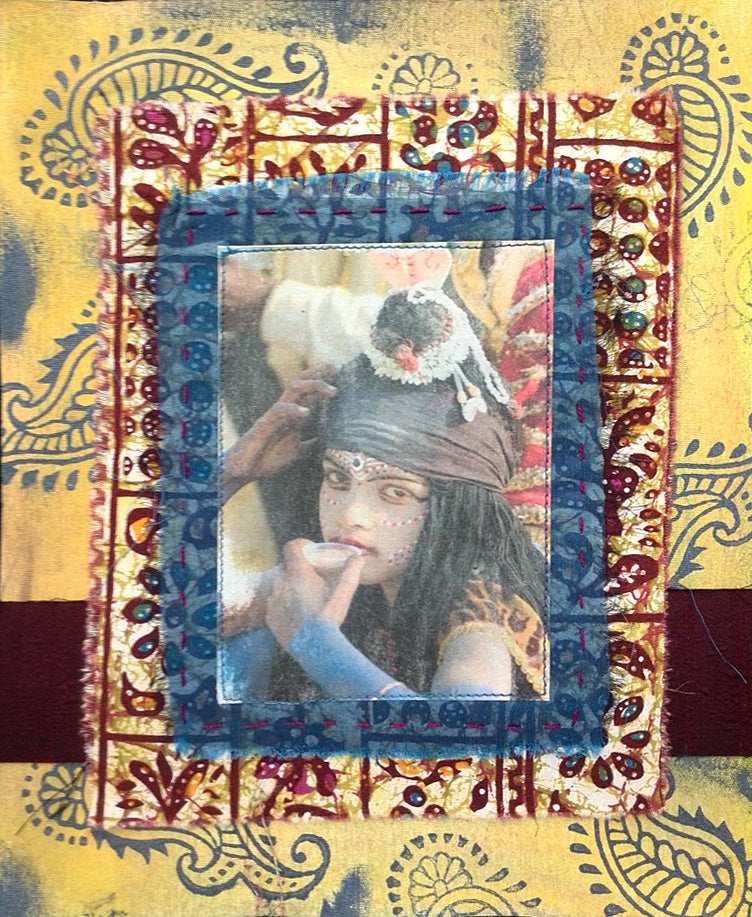
Above, another version of a finished transfer (note that for this piece my starting image was reversed so that the finished art had the girl facing left) has been layered and stitched with embellishment fabrics on top of a piece of painted Roc-lon Multi-Purpose Cloth, block printed with wooden printing blocks and textile paints.
Helpful Tips:
- If you wait too long to pull up the paper or have too much medium, the paper will start to dissolve. If this happens, lay the paper back down and let dry completely in place. Use water to dissolve the paper and rub it off with your fingers.
- If there is paper residue on the image after removing the paper, simply wait for the transfer to dry. Dampen your finger with water and rub the area to remove the paper fuzzies. Or, the image can be soaked in water while you rub off the excess paper. Do not rub too hard, or you will remove the image.
About the Author
Liz Kettle of Textile Evolution is a fabric and mixed media artist with a passion for teaching others the joy of making art and the creative process. After acquiring the skills for success in the traditional quilting arena she began to delve into art quilting and discovered a world of freedom and fun in mixed media. Liz is the co-author of Fabric Embellishing: The Basics & Beyond and Threads: The Basics & Beyond, and the author of First-Time Beading on Fabric and Know Your Needles: A Carry-Along Guide for Choosing Hand and Machine Needles.



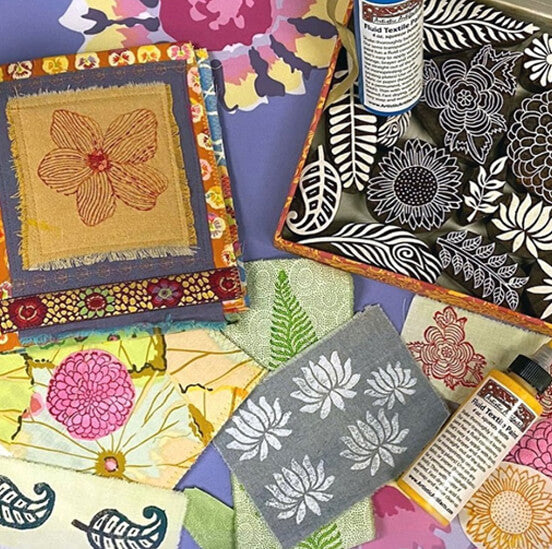



Leave a comment